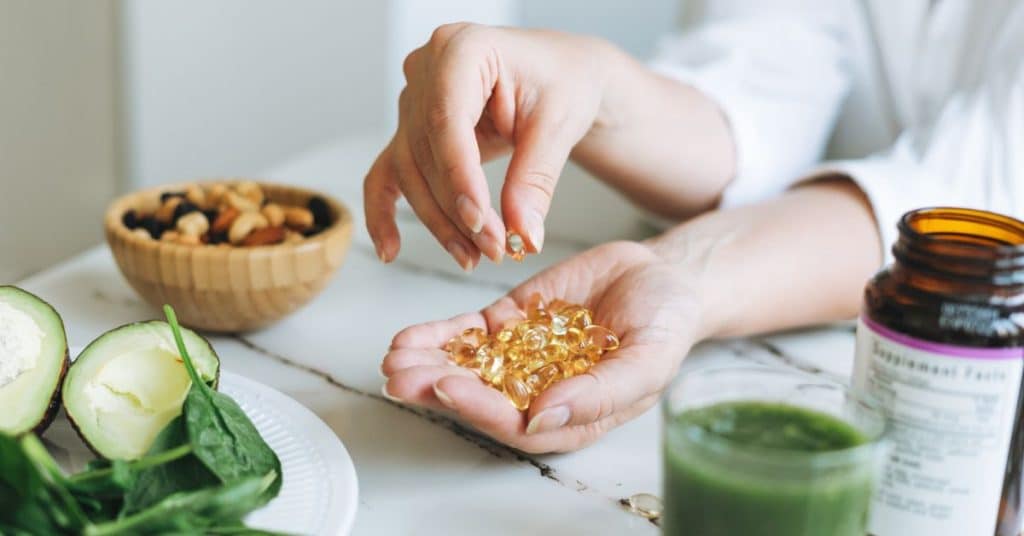

For many, winter brings cold, dark days and an increased interest in vitamin D. Sometimes called the sunshine vitamin, vitamin D has received more interest in recent years, for good reason. In this article, we will cover what it is, why it is important, and how you can make sure you are not deficient.
Vitamin D is technically not a vitamin because humans can produce it themselves through exposure to sunlight. Vitamin D is biologically inert and must undergo two chemical processes in the body for activation. The first process occurs in the liver and converts vitamin D to a prehormone called calcidiol; the second process occurs primarily in the kidney and forms the physiologically active hormone calcitriol.[1] When we do not get enough vitamin D, we do not have enough calcitriol inside our tissues, and not having enough of a hormone can be very bad news.
Human DNA contains more than 2,700 binding sites for calcitriol, including sites involved in virtually every major human disease.[2] The widespread presence of these binding sites suggests that calcitriol—and therefore vitamin D—is very important throughout the body. We often hear about its importance for bone health because vitamin D deficiency causes rickets in children and osteomalacia or osteoporosis in adults, but vitamin D has many other critical functions in the body. Indeed, a growing body of evidence shows that vitamin D is important for preventing and treating numerous conditions, including asthma, heart failure, and autoimmune diseases such as multiple sclerosis and inflammatory bowel disease (e.g., Crohn’s disease, ulcerative colitis).[3][4][5]
Vitamin D is somewhat scarce in standard human diets because there are few natural dietary sources. One common source is oily fish (e.g., salmon, sardines, etc.), but to get enough vitamin D from oily fish alone, you would need to eat two or more large servings every day! Because of the lack of natural vitamin D in most foods, milk in many countries, including in the United States, is fortified with vitamin D. However, fortified dairy and nondairy milk generally contain very low levels of vitamin D. Some other products can contain added vitamin D too, but this varies by region and food supplier. Mushrooms are one of the few natural plant-based sources of vitamin D, but only when they have been exposed to sunshine (or ultraviolet B).[6] Because most of the mushrooms sold in grocery stores are not grown in natural conditions with very much sunshine exposure, if any, their vitamin D content is usually relatively low.
That leaves sunshine, the primary source of vitamin D for most humans on the planet. When the ultraviolet light from the sun penetrates human skin, it triggers a chemical reaction that generates vitamin D. If a person with fair skin wearing a bathing suit goes out in the sun for around 20 minutes, they can produce about 20,000 IU (international units) of vitamin D. For comparison, a large fatty piece of fish might contain 1,000 IU.[2] Importantly, although individuals with darker skin also generate vitamin D from sun exposure, they are not quite as efficient because their darker skin contains more UV-blocking melanin. This is one reason why vitamin D deficiency can be more severe among people of color.[7] People also lose some of their ability to synthesize vitamin D from sunshine as they age, putting the elderly at a greater risk for deficiency.[8]

Geographic location, specifically latitude (distance from the equator), influences vitamin D levels: the further we are from the equator, the lower the strength of the sun and the lower our potential to produce vitamin D. Season also makes a difference. In the summer, the sun is higher in the sky, which means less UV radiation is filtered by the atmosphere and the daytime is longer. Certain parts of the US are exposed to sun strong enough to produce sufficient quantities of vitamin D all year (e.g., Miami), but other places, like New York, do not get strong enough sun for about four months (November to February). Some cities even further north than New York do not get strong enough sun for about six months (October to March).
Other factors that reduce sun exposure and vitamin D production include excess pollution, always staying in the shade (including in the shadows of skyscrapers), sunscreen, glass windows, and clothing. Most modern human activity is indoors and away from the sun, increasing the risk of vitamin D deficiency. For example, office workers and people who cover their skin for religious reasons are at a higher risk for deficiency.[9][10]
I tell my patients to follow Kerley’s shadow rule: if your shadow is shorter than your body, you can make vitamin D (as long as you are in the sun and not covered head to toe in either clothes or sunscreen). If your shadow is longer than your body, you are probably not making vitamin D, regardless of how sunny or warm it is.
Also, the vitamin D requirement is not a justification to burn your skin. Each person’s skin is different, and you should be mindful of not overdoing it. Although there is no evidence that moderate sunshine exposure is harmful—and you can get plenty of vitamin D with moderate exposure—consistent evidence suggests sunburns are associated with skin damage.
Vitamin D deficiency affects around 1 billion people, making it one of the biggest nutritional issues worldwide.[2] Indeed, over 75 percent of Americans are vitamin D deficient.[11]
A 2014 review of 32 studies reported that low vitamin D levels were associated with a 90 percent increased risk of early death![12] Additionally, two separate reviews of 78 vitamin D supplementation studies reported that taking a vitamin D supplement decreased the death rate in healthy adults.[13][14] Another large review reported that taking a vitamin D supplement decreased the death rate in cancer patients.[15]
A vitamin D blood level of around 30 ng/ml (75 nmol/L) is optimal (the blood test is called 25-hydroxyvitamin D or 25[OH]D). Most humans only need moderate, regular sun exposure to obtain this blood level. If the sun is strong enough (remember Kerley’s shadow rule), exposure every other day for 10–20 minutes will be sufficient. Darker skin will generally need longer. However, this may not be possible farther from the equator or during the winter. It might also be impractical if your schedule and lifestyle make getting outside difficult. In these scenarios, a vitamin D supplement is worth considering.
There are two more common types of vitamin D: vitamin D2 (generally plant-based) and vitamin D3 (generally derived from sheepskin). Vitamin D3 is thought to be more effective than vitamin D2 in raising blood levels and improving health.[16][13][14] Not all D3 supplements, however, are derived from sheepskin: look for products labeled “plant-based” or “vegan.” For adults, 2,000 IU (50 micrograms) per day is a good starting point, but exact requirements will depend on your body size (larger bodies require more vitamin D), diet, sun exposure, and genetics.[17] And yes, it is possible to take too much. Therefore, you should discuss the best approach with your doctor. If you choose to take a vitamin D supplement, it is also preferable to take it with food and at regular intervals (e.g., daily, as opposed to taking large doses at irregular intervals).[18]
Vitamin D supplements are not the cure-all that some claim. But the nutrient is essential. Aim for moderate sun exposure when possible and consider vitamin D supplementation when it is not.
Copyright 2025 Center for Nutrition Studies. All rights reserved.